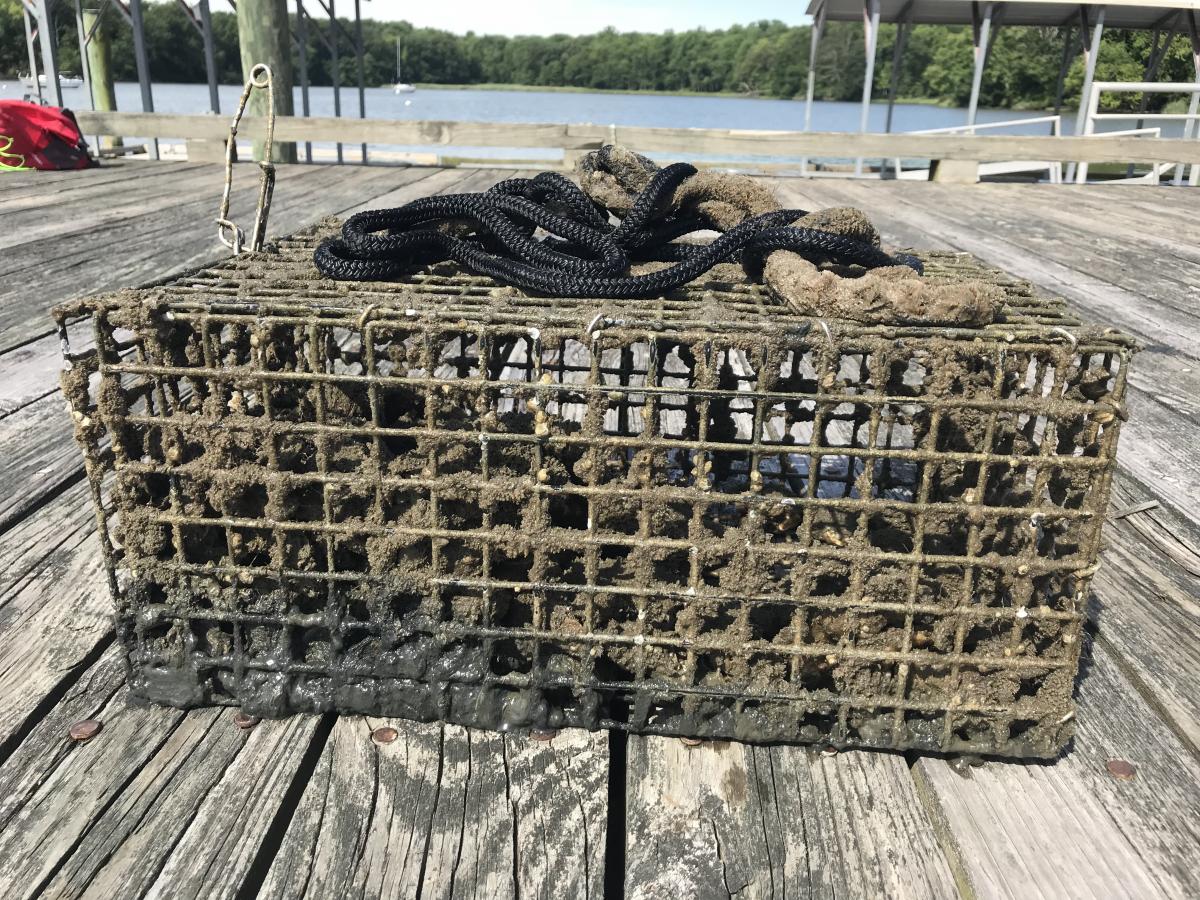Tracking Oyster Growth in the Rhode River
Help us restore Maryland's oyster reefs by tracking the growth and survival of baby oysters!
The West and Rhode Riverkeeper currently works with volunteers to restore Maryland's oyster reefs, but has never collected data about the ways that we might be able to help more oysters survive or grow larger. Our SERC Participatory Science team is teaming up with the Riverkeeper and South River High School to develop best practices for oyster growth while being time and resource-efficient.
The "What" and the "Why"
What are we trying to learn?
The West and Rhode Riverkeeper currently works with volunteers to restore Maryland's oyster reefs. Initially, young oysters need a safe place to grow, therefore, participants hang baskets of baby oysters off of their docks. Once the oysters are large enough, they are taken to an oyster sanctuary in the South River. However, the Riverkeeper has never collected data about the ways that we might be able to help more of the oysters survive or grow larger.

SERC's Participatory Science Program is collaborating with the Riverkeeper and South River High School student, Jack Drohat, to try and figure out the best ways to grow the oysters. From the experiment that we started fall 2018, we hope to identify the optimal amount of oyster shells per oyster basket. In January 2019, we will get results and use these to develop best practices for the Riverkeeper and their volunteers, so their time and resources are used most effectively.
Why study oysters?
Oysters are a vital part of the Chesapeake Bay ecosystem. Oysters act as natural water filters simply by eating and respiring. A healthy adult oyster can filter up to 50 gallons a day! Primarily, oysters help improve water quality. They remove excess algae, nutrients, and silt from the water. This increases the clearness of the water, which helps underwater plants grow. Filter feeders like oysters also lower the risk of algal blooms. When large amounts algae grow at once, they create areas without enough oxygen. When oxygen is too low in the water, fish and other marine creatures can die. Oysters can help prevent these events.
Oyster reefs also create habitats for other species. Their hard shells provide surfaces for barnacles and mussels to attach. The space around the shells provides shelter and spawning areas for young and smaller species of fish. Ecological benefits also turn into economic benefits. More species and larger populations make the whole bay more productive. Unfortunately, Eastern oysters are under threat from disease, over-harvesting, and excess sediment.
Get Involved
Get Involved
We would not be able to complete as large of a project or have as large of a dataset without help from committed volunteers. Without you, it would be very difficult for us to study the best ways to grow juvenile oysters for Marylanders Grow Oysters.
Eligibility and Time Commitment
We ask that volunteers be able to join us for half or full day increments. Volunteers must be at least 12 years old to help out with the field activities, and at least 16 years old to help in the lab. Volunteers under the age of 16 must be accompanied by a responsible adult.
Location and Days/Times
Volunteers will be needed to count and measure oyster shells and spat in January. Weekend volunteer dates will be posted in our newsletter.
Volunteers can meet us at the SERC Dock in Edgewater, MD where we will be collecting data.
To sign up or for more information, please contact Rachael Mady, SERC Participatory Science Coordinator, at madyr@si.edu
Methods
Our goal is to adjust to the way the oysters are grown so that more survive each year. This year our experiment focuses on the initial amount of spat-on-shell in each cage. Does loading the cages with less spat-on-shell result in larger oysters because they have more room to grow? Will more spat survive to become oysters if there is a larger initial amount of spat-on-shell in the cages? You can help us answer these questions by volunteering for this experiment.

From the experiment, that we started this fall, we hope to identify the optimal amount of oyster shells per 40 oyster baskets. We counted and measured the spat, and the baskets are currently hanging from private docks throughout the Rhode River. Some of the baskets have the amount of oyster shells that the Riverkeeper has traditionally used, some have 50% more shells, and some have 50% fewer shells. In January 2019, we will recount and measure the (hopefully bigger) baby oysters. We will use our results to develop best practices for the Riverkeeper and their volunteers, so their time and resources are used most effectively.
Get Involved
* We are not currently accepting new volunteers *
We would not be able to complete as large of a project or have as large of a dataset without help from committed volunteers. Without you, it would be very difficult for us to study the best ways to grow juvenile oysters for Marylanders Grow Oysters.
Eligibility and Time Commitment
We ask that volunteers be able to join us for half or full day increments. Volunteers must be at least 12 years old to help out with the field activities, and at least 16 years old to help in the lab. Volunteers under the age of 16 must be accompanied by a responsible adult.
Location and Days/Times
Volunteers will be needed to count and measure oyster shells and spat in January. Weekend volunteer dates will be posted in our newsletter.
Volunteers can meet us at the SERC Dock in Edgewater, MD where we will be collecting data.
To sign up or for more information:
Contact Rachael Mady, SERC Participatory Science Coordinator, at MadyR@si.edu or 443-482-2276.